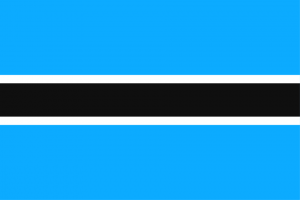Language/Tswana/Vocabulary/Household-Items
Introduction
In this lesson, you will learn the names of common household items in Tswana and practice using them in sentences. By the end of this lesson, you will be able to confidently talk about household items in Tswana.
Tswana is spoken by around 4.5 million people, primarily in Botswana and South Africa. Learning Tswana can enrich your understanding of the culture and help you communicate effectively with Tswana speakers.
Vocabulary
Here are some of the most common household items in Tswana:
| Tswana | Pronunciation | English |
|---|---|---|
| sefate | seh-fah-teh | chair |
| moriri | moh-ree-ree | bed |
| ditiragalo | dee-tee-rah-gah-loh | appliances |
| tebogo | teh-boh-goh | table |
| diphala | dee-pah-lah | stove |
| tsaitsai | tsahy-tsahy | fridge |
| setopere | seh-toh-peh-reh | microwave |
| khokholedi | kho-kho-leh-dee | cupboard |
| morogo | moh-roh-goh | curtains |
| lerotse | leh-roh-tseh | carpet |
| setswana | seh-tswah-nah | couch/sofa |
| dikwetlho | dee-kwet-loh | dishes |
Some additional vocabulary words that might be useful when discussing household items are:
| Tswana | Pronunciation | English |
|---|---|---|
| tshweu | tshweh-oo | white |
| tala | tah-lah | large |
| saikae | sahy-kye | small |
| tshimoloho | tshih-moh-loh-hoh | heavy |
| nkgono | ng-koh-noh | light |
Grammar
When discussing household items in Tswana, you will likely use the verb "e tsenya," which means "to change." For example, "ke itse go e tsenya mehato" means "I know how to change a lightbulb."
Here are some examples of sentences you might use when discussing household items:
- "Ke tla itumela diphala." (I will use the stove.)
- "O tla e tsenya leina la gago." (You will change your name.)
- "Re tla ikgolaganye, ke tla e tsenya." (We will fix it, I will change it.)
When using adjectives to describe household items, it's important to consider the noun class. For example, the word "tala" (large) would change to "yatla" when used with a class 6 noun like "saka" (chair) to become "saka sa yatla" (a large chair).
Exercises
Practice using the vocabulary words and grammar structures in the following exercises:
__Write the following sentences in Tswana:__ 1. I need to change the curtains. 2. The carpet is light. 3. This microwave is small. 4. We will use the appliances. 5. She has a heavy table.
__Translate the following sentences to Tswana:__ 1. Can you fix the stove? 2. I want a large bed. 3. He knows how to change the lightbulb. 4. They have small chairs. 5. We like the white curtains.
__Complete the following sentences:__ 1. Ke tla itumela ___. 2. Ke itse ___ go tsenya sefate. 3. Re tla ikgolaganye, ke tla e ___ . 4. Ke tla ___ diphala. 5. O sa ___ tshweu.
Conclusion
In this lesson, you learned the names of common household items in Tswana and how to use them in sentences. You also learned about the verb "e tsenya," which means "to change," and how to use adjectives to describe household items. To deepen your knowledge of Tswana, make sure to practice using the vocabulary and grammar structures you learned in this lesson. ****************************************************************************

